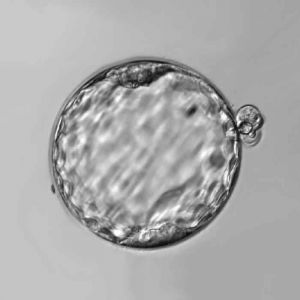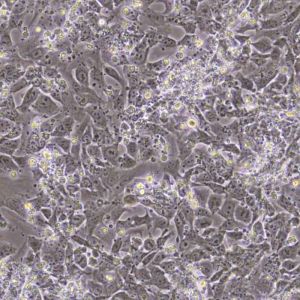What are Stem Cells?
A stem cell is an undifferentiated cell that has the potential to divide and differentiate into any of the 220 types of cells in the human body.
Depending on where they are harvested, their potential will be different.
Embryonic Stem cells can be harvested from 4 or 5 day old embryos left over after in vitro fertilization or specifically prepared by cloning using the patient’s DNA. At this stage of development the embryo is no more than a ball of cells and it is the 30 or so cells known as the inner cell mass that are extracted and cultured in the lab. In this way, the 30 cells can divide into millions of stem cells each with the capability of becoming any type of cell.
Embryonic Stem Cells are the most powerfully regenerative cells tested to date. Embryonic Stem Cells prepared with the patient’s DNA by cloning can be introduced directly into the patient’s organ to replace the damaged cells and make them the best body repair kit.
Our Embryonic Stem Cells are grown without animal feeder layers and thus do not present any contamination danger.
What is Stem Cell Therapy?
Stem Cell Therapy (SCT), is a treatment that provides putting stem cells in the part of the body where it is needed in order to assist in the healing and regeneration of its damaged organs.
Depending on the conditions, stem cells can be delivered through the blood stream or directly to the organ that is in need of treatment. Within 30 minutes of their delivery, the body starts to repair its damaged organs and the healing process can be observed up to 10 days after the injection. Several injections might be needed depending on the severity of the conditions and the expected results.
What is Pluripotent Stem Cell Therapy?
A pluripotent stem cell is an undifferentiated cell that has the potential to divide and differentiate into any of the 220 cell-types of the human body. Stem Cell Therapy (SCT), is the utilization of these cells in order to assist the body in the healing and regeneration of its existing cells.
Depending on the conditions, pluripotent stem cells can be delivered through the blood stream or directly to the organ that is in need of treatment. Within 30 minutes of their delivery, the body starts to repair its damaged organs and the healing process can be observed up to 10 days after the injection. Several injections might be needed depending on the severity of the conditions and the expected results.
Stem Cell Treatments Available
Chronic obstructive pulmonary disease (COPD) is a chronic lung disease that gets worse over time. Having COPD makes it hard to breathe. There are two main forms of COPD: Chronic bronchitis, which involves a long-term cough with mucus. Emphysema, which involves damage to the lungs over time.
Diabetes is a disease that occurs when your blood glucose, also called blood sugar, is too high. Blood glucose is your main source of energy and comes from the food you eat. Insulin, a hormone made by the pancreas, helps glucose from food get into your cells to be used for energy.
Alzheimer’s disease is a progressive brain disorder that slowly destroys memory and thinking skills and, eventually, the ability to carry out the simplest tasks. In most people with the disease.
A stroke is a sudden interruption in the blood supply of the brain. Most strokes are caused by an abrupt blockage of arteries leading to the brain (ischemic stroke). Other strokes are caused by bleeding into brain tissue when a blood vessel bursts (hemorrhagic stroke).
Lyme disease, also known as Lyme borreliosis, is an infectious disease caused by the Borrelia bacterium which is spread by ticks. The most common sign of infection is an expanding area of redness on the skin, known as erythema migrans, that appears at the site of the tick bite about a week after it occurred.
The cause of Cerebral Palsy is a brain injury or brain malformation that occurs while the brain is developing before, during, or after birth. As a result of the brain damage during brain development a child’s muscle control, muscle coordination, muscle tone, reflex, posture and balance can be affected.
Pulmonary fibrosis is a chronic and progressive lung disease where the air sacs in the lungs, called the alveoli, become scarred and stiff, making it difficult to breathe and get enough oxygen into the bloodstream.
Heart disease also known as Cardiovascular diseases describes a range of conditions that affect your heart. Diseases under the heart disease umbrella include blood vessel diseases, such as coronary artery disease; heart rhythm problems (arrhythmias); and heart defects you’re born with (congenital heart defects), among others.
We all now have a rather good understanding of the different anti-ageing factors. Our diet, the amount of sugar we eat, the quality of our water, our drug exposure and our emotional balance, all the choices we make every day affect the way we age.
Scleroderma is an uncommon condition that results in hard, thickened areas of skin and sometimes problems with internal organs and blood vessels.
Whether the injury is recent or has occurred several years ago, stem cell transplants will gradually restore the functions that have been lost after a Brain Injury.
Multiple sclerosis (MS) is a progressive, immune-mediated disorder. That means the system designed to keep your body healthy mistakenly attacks parts of your body that are vital to everyday function. The protective coverings of nerve cells are damaged, which leads to diminished function in the brain and spinal cord.
Of the many patients who have received Stem Cell Health’s stem cell therapy protocols, a large number had been taking opioids in order to cope with the debilitating pain associated with chronic conditions such as Lyme or arthritis. It came as a surprise to learn that some of these patients had, of their own volition, managed to lower their opioid intake during the course of their stem cell therapy treatment and without the discomfort normally associated with doing so.
Producing Pluripotent Stem Cells

A blastocyst is an early-stage embryo (5 days old) of 100-200 cells which are barely visible to the naked eye. At this stage, the cells are not yet predetermined, i.e., there’s not a single blood cell, muscle cell, bone cell etc.
From the “inner cell mass” of the blastocyst, pluripotent embryonic stem cells are obtained and then cultured. Additional blastocysts are only required when a new line is created.

Why Use Embryonic Stem-Cells?
Contact Stem Cell Health to learn more about innovative stem cell therapy.

